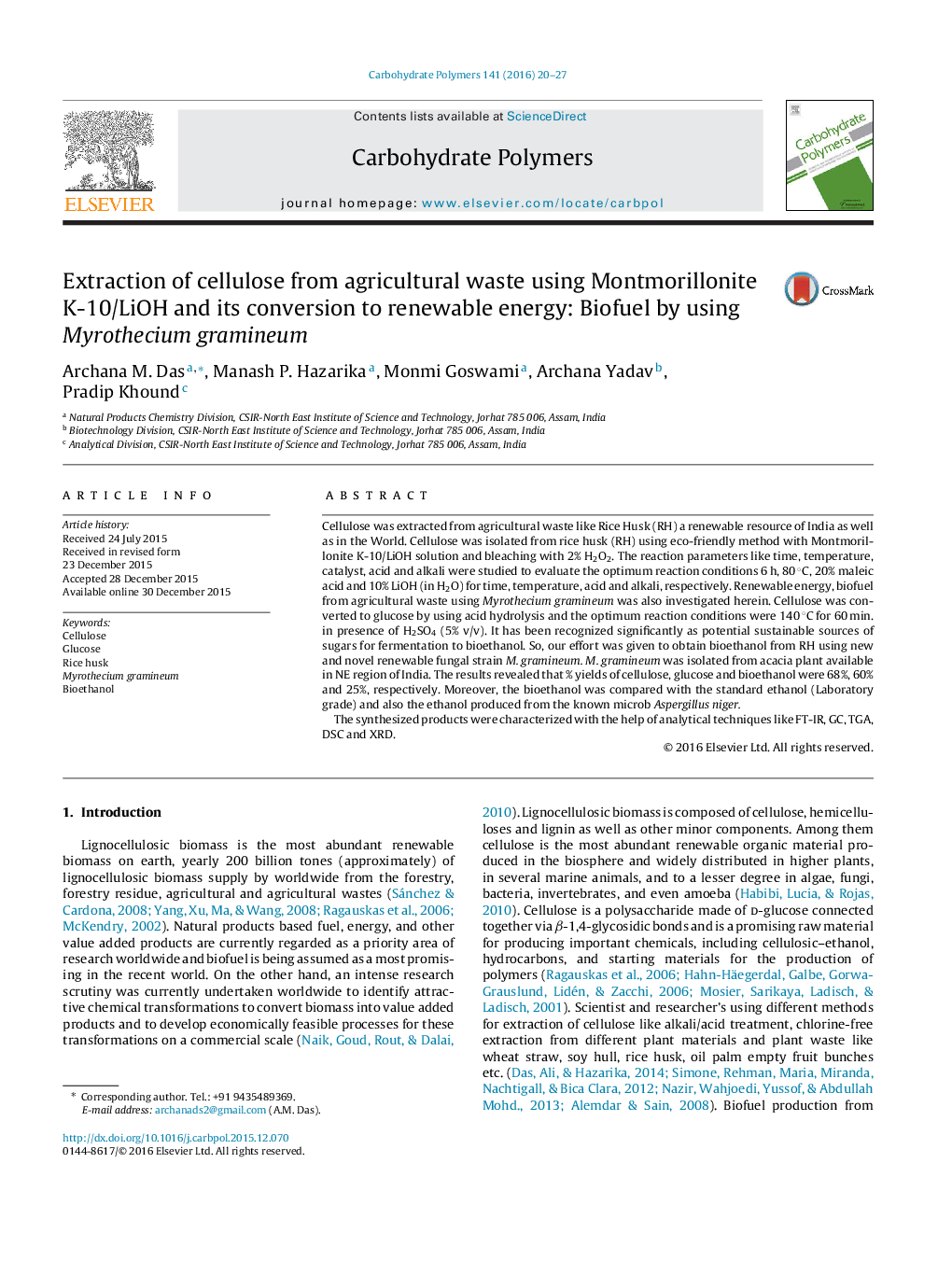| کد مقاله | کد نشریه | سال انتشار | مقاله انگلیسی | نسخه تمام متن |
|---|---|---|---|---|
| 1374489 | 1500617 | 2016 | 8 صفحه PDF | دانلود رایگان |

• Isolation of cellulose and glucose from agricultural waste [Rice Husk (RH)] using eco-friendly method = Montmorillonite K-10/LiOH and characterization.
• Cellulose is converted to glucose by acid hydrolysis process with good yield 60%.
• Biofuel from Agricultural Waste (RH) using new and novel fungal strain Myrothecium gramineum with the yield of 25 % and M. gramineum is isolated from acacia plant of North East India.
• Rice Husk (RH) and Myrothecium gramineum both are renewable.
• Characterization of the products by FT-IR, XRD, TG, DTG, DSC, GC etc.
Cellulose was extracted from agricultural waste like Rice Husk (RH) a renewable resource of India as well as in the World. Cellulose was isolated from rice husk (RH) using eco-friendly method with Montmorillonite K-10/LiOH solution and bleaching with 2% H2O2. The reaction parameters like time, temperature, catalyst, acid and alkali were studied to evaluate the optimum reaction conditions 6 h, 80 °C, 20% maleic acid and 10% LiOH (in H2O) for time, temperature, acid and alkali, respectively. Renewable energy, biofuel from agricultural waste using Myrothecium gramineum was also investigated herein. Cellulose was converted to glucose by using acid hydrolysis and the optimum reaction conditions were 140 °C for 60 min. in presence of H2SO4 (5% v/v). It has been recognized significantly as potential sustainable sources of sugars for fermentation to bioethanol. So, our effort was given to obtain bioethanol from RH using new and novel renewable fungal strain M. gramineum. M. gramineum was isolated from acacia plant available in NE region of India. The results revealed that % yields of cellulose, glucose and bioethanol were 68%, 60% and 25%, respectively. Moreover, the bioethanol was compared with the standard ethanol (Laboratory grade) and also the ethanol produced from the known microb Aspergillus niger.The synthesized products were characterized with the help of analytical techniques like FT-IR, GC, TGA, DSC and XRD.
Figure optionsDownload as PowerPoint slide
Journal: Carbohydrate Polymers - Volume 141, 5 May 2016, Pages 20–27